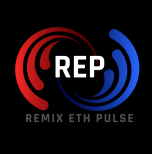What is Shadow AI?
Recently, companies are facing a new challenge: generative AI tools have been spontaneously integrated into workflows by some employees without formal approval. This phenomenon is referred to as “Shadow AI,” which denotes the use of AI tools in business by employees without the authorization of the IT department or management.
According to Zendesk’s Customer Experience Trends Report 2025, nearly 50% of customer service personnel reported having used unauthorized generative AI tools at work. Furthermore, Shadow AI is not only prevalent in the technology sector but is also rapidly spreading to finance, manufacturing, and healthcare, with annual growth rates of 230% to 250%, far outpacing officially deployed AI systems within enterprises.
Today, generative AI has become a spontaneously adopted work partner for employees in the workplace. If companies only focus on the risks associated with this wave of “self-provided AI tools,” they may miss the opportunity to harness new productivity.
Why Does Shadow AI Exist? Not Deliberate Violations, But Efficiency Needs
Why is the situation of Shadow AI so severe? Multiple reports consistently indicate that the rapid spread of Shadow AI is related to several structural factors. On one hand, generative AI tools have significantly proliferated in recent years, lowering the barriers to usage; on the other hand, the accelerated pace of work and increased workloads have prompted employees to seek assistance tools to enhance efficiency actively.
Microsoft and LinkedIn in the Work Trend Index 2024 noted that 75% of knowledge workers reported currently using AI tools at work, with nearly half starting to use them within the last six months. The primary reasons for adopting AI include saving time, enhancing focus, or simplifying routine tasks. In the survey, 90% of users believed that AI helped them save time, 85% felt it allowed them to focus more on high-priority tasks, and over 80% believed that AI made them more creative and fulfilled in their work.
This application trend has seen significant changes across various industries. Zendesk’s survey found that the usage rate of Shadow AI in the financial services industry increased by 250% annually, while manufacturing and healthcare also experienced more than double annual growth. These industries often handle sensitive customer information or adhere to strict regulations, making the prevalence of Shadow AI heighten the tension between risk and efficiency.
As the scope of Shadow AI continues to expand, the potential risks it brings cannot be ignored. From data security to compliance issues, companies need to confront these challenges and seek a balance.
Risks Behind Shadow AI: More Than Just Data Breaches
Despite the potential short-term performance improvements brought by Shadow AI, its risks have raised concerns among corporate security and compliance teams. According to Infosecurity Magazine, 38% of employees have entered company data into AI tools without authorization; in the UK, 20% of companies have experienced data breaches due to AI usage.
In Europe, companies that fail to comply with the General Data Protection Regulation (GDPR) may face fines of up to 20 million euros or 4% of their annual revenue. Moreover, the operating logic and data sources of AI models themselves may exhibit biases; if not properly trained or lacking review processes, their outputs could lead to misleading information, biased responses, or decisions that contradict corporate values.
Additionally, the lack of clear consensus and systems regarding AI applications complicates risk management. A Microsoft report indicated that 59% of corporate leaders found it difficult to measure the actual productivity gains from AI, while 60% believed that their organizations lacked a clear AI development plan or vision. This governance vacuum makes Shadow AI a product of individual employee decisions, making it challenging for companies to fully grasp its risks and potential value.
How Should Companies Respond to Shadow AI? Banning It Won’t Solve the Problem
In light of the widespread existence of Shadow AI, most studies no longer advocate for “blocking” as the primary solution. Since employees’ motivations for implementing AI tools are often driven by positive goals, such as streamlining processes and enhancing efficiency, outright bans may stifle innovation and render these behaviors more covert.
Thus, more pragmatic strategies have been proposed: while managing risks, establish formal usage pathways to promote visible and compliant AI applications. Zendesk and IBM suggest that companies consider the following measures:
- Implement AI tools with enterprise-level authorization and security designs to reduce employees’ need to seek alternatives.
- Establish AI usage policies that clearly define which tasks and types of data may be handled by AI.
- Create an AI Center of Excellence to coordinate governance, training, and experimentation spaces.
- Utilize behavior analytics tools to identify potential Shadow AI usage scenarios.
Nevertheless, there is no single standard for AI governance. Companies must consider their industry characteristics, employee work patterns, and regulatory requirements to establish a framework that balances risk management with innovative flexibility. The key is not prohibition but rather the introduction of visibility and trust mechanisms, allowing innovative behaviors to return to the organizational governance perspective.
Shadow AI is not merely a manifestation of violations or disobedience; it also reflects the gap between governance and demand in companies when facing the new wave of technology. When employees proactively implement tools to solve practical dilemmas, these behaviors often reveal the inadequacies of organizational systems to respond in a timely manner.
Only by establishing clear and flexible AI usage policies, encouraging visible innovation and experimentation spaces, can companies channel the energy of “shadow usage” back into the framework of organizational governance, allowing technology and risk management to proceed in tandem, thereby enhancing overall competitiveness and trust foundations.
Data Sources: Infosecurity Magazine, Work Trend Index 2024, Zendesk
This article is authorized for reprint from: Future Business

